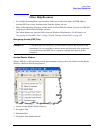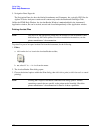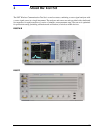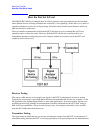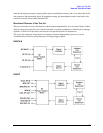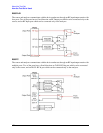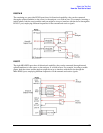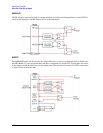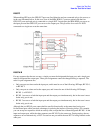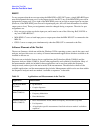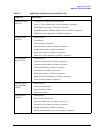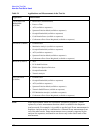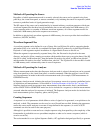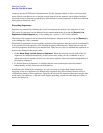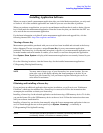
127
About the Test Set
How the Test Set Is Used
E6607C
When making GPS tests, the GPS OUT ports are fixed direction and are connected only to the source, as
in the case illustrated below. In this case, four of the MPA RFIO 0-7 ports are paired with the four
GPS OUT ports and each pair is connected to a single DUT. In each pair, the MPA RFIO port serves as
the input port and the GPS OUT port serves as the output port. This provides for a total of 4 DUTs
connected to a single test set at the same time.
E6607A/B
For any sequence that the test set runs, a single port must be designated the input port, and a single port
must be designated the output port. These port assignments cannot be changed during a sequence. The
rules for port assignments are:
• Only one port at a time can be the input port, and it must be one of the following: RF Input, RF I/O 1,
or RF I/O 2.
• Only one port at a time can be the output port, and it must be one of the following: RF Output,
RF I/O 1, or RF I/O 2.
• RF I/O 1 can serve as both the input port and the output port simultaneously, but in that case it must
be the only port in use.
• RF I/O 2 can serve as both the input port and the output port simultaneously, but in that case it must
be the only port in use.
Although the two RF I/O ports cannot both be used bi-directionally at the same time, having two
bi-directional ports offers practical advantages in reducing the impact of fixturing delays. For example,
you can set up two sequences which are exactly alike, except that one of them designates RF I/O 1 as the
input and output port, while the other sequence uses RF I/O 2 in the same way. During testing, the two
sequences are run alternatively; a DUT is tested on one port while the next DUT is being fixtured on the
other port.



